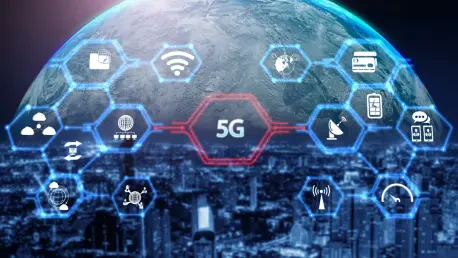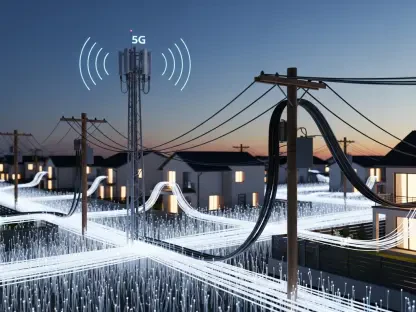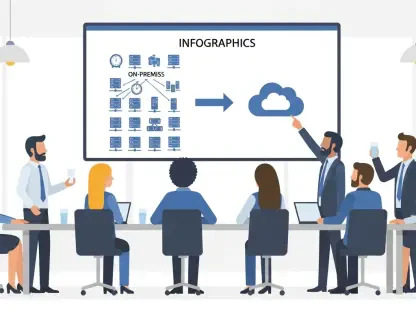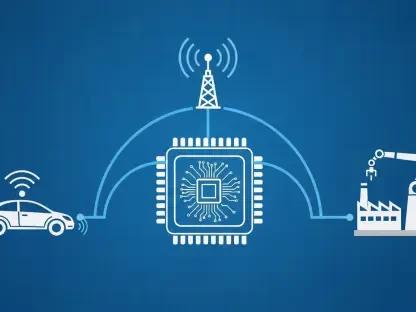Listen to the Article
For more than a decade, the telecom industry’s north star has been 5G. Faster speeds. Lower latency. Greater device density. With each G, operators have raced toward the next performance threshold, armed with promises of next-gen connectivity and economic transformation. But as 5G networks approach saturation and the real-world ROI remains elusive, a critical question emerges: What actually defines success after 5G?
For enterprise telecoms, success is no longer measured solely in throughput, bandwidth, or coverage. In a post-5G era defined by intelligent automation, edge workloads, and hyperscale cloud integration, new metrics are taking center stage: reliability, energy efficiency, application-level performance, and user experience. The Gs may have gotten you here, but they won’t take you further.
This article explores the next generation of performance benchmarks that will define telecom success in the years ahead—and why the smartest operators are shifting focus from raw speed to real outcomes.
The 5G Hype Hangover
5G deployment has been a technical marvel, but not always a business win. According to Analysys Mason, telcos in advanced markets have not completed their standalone 5G rollouts, though they are expanding.
What went wrong? A few things. First, telcos over-indexed on consumer speed as a selling point, only to discover that most users didn’t need 1 Gbps mobile data for TikTok and Zoom. Second, enterprises—the real target for private 5G, network slicing, and ultra-reliable low latency communication—have been slow to adopt. IDC forecasts that enterprise 5G adoption will rise, but not exponentially, with hybrid models and Wi-Fi 6E competing for dominance.
But perhaps most importantly, the metrics used to define 5G success—peak download speeds, spectral efficiency, coverage maps—are no longer sufficient to describe the value that telcos must now deliver. In today’s landscape, availability beats velocity.
Latency Isn’t the Only Bottleneck Anymore
Low latency was one of 5G’s biggest selling points. And to be clear, it still matters. But modern telecom success will depend more on consistency than on shaving milliseconds off the response curve.
Consider industrial automation or remote surgery. These aren’t applications where speed alone wins. They require jitter-free, deterministic networks. They demand packet delivery guarantees and fault tolerance. That’s why some telcos are pivoting toward ultra-reliable low-latency communications with edge-cloud orchestration, where the emphasis is on network resilience and real-time failover rather than flashy latency numbers.
This shift is not theoretical. Ericsson’s Mobility Report notes that a majority of enterprise 5G use cases now cite deterministic performance as more important than raw latency.
Energy Efficiency: The Quiet KPI Driving Change
With rising energy prices and mounting regulatory pressure to hit sustainability goals, the telecom sector is facing its next great challenge: doing more with less wattage.
5G base stations consume up to 3x more power than 4G sites, according to Zhengmao Li, EVP China Mobile (biggest operator in the world), and as densification increases—particularly with mmWave deployments—operators are staring down unsustainable power bills.
In response, the industry is turning to next-gen metrics like:
Energy per bit transmitted (J/bit).
Carbon cost per gigabyte.
Dynamic power scaling efficiency.
Deutsche Telekom, for instance, now publishes an annual energy scorecard across its mobile network operations. Meanwhile, GSMA’s “Net Zero by 2040” initiative is pushing telcos to integrate energy efficiency into network planning, RAN upgrades, and spectrum allocation.
These are no longer “nice to have” metrics but financial and strategic imperatives.
Application-level Performance Is the New Gold Standard
Enterprise clients buy 5G for a reason. Whether it’s autonomous vehicles, smart factories, or immersive learning platforms, the metric that matters most is application performance at the edge.
This is driving the rise of network KPIs that are use-case specific, such as:
Frame loss in AR/VR sessions.
Uptime guarantees for mission-critical IIoT sensors.
Application-aware Quality of Service for enterprise SLAs.
What this means is clear: the era of advertising network speed is fading. Instead, telcos must instrument their networks to deliver verifiable outcomes at the application level—and bake that performance into commercial agreements.
User Experience Over Infrastructure Boasting
Customers don’t care how many cell towers you own—they care whether their call drops or their smart factory sensors fail at scale. The telecom industry is finally coming around to the idea that infrastructure doesn’t sell—experience does.
This is ushering in experience-centric metrics like:
Mean Opinion Score for voice quality.
Session completion rate for video calls.
End-user perceived latency for real-time apps.
Telecom leaders are now investing in Quality of Experience platforms to measure and improve these key performance indicators dynamically. Rakuten Mobile, for example, has tied executive bonuses to subscriber satisfaction scores—an unthinkable move a few years ago.
In a world of OTT competitors and zero-switching costs, Quality of Experience is a retention strategy.
Benchmarking for the Next Decade: What to Track Now
If the telecom sector is entering a post-5G maturity phase, what should operators actually track?
The following table compares traditional telecom success metrics with emerging performance benchmarks that better reflect business outcomes, such as application reliability, energy efficiency, and user experience.
Traditional Metric | Emerging Equivalent |
Peak Download Speed | |
Coverage Map | Uptime% by Use Case/Location |
Spectral Efficiency | |
Latency | Determinism / Jitter / Packet Delivery Ratio |
Network Investment | Customer Quality of Experience & Net Promoter Score |
This shift demands that telcos retrain teams, rebuild analytics platforms, and rethink how success is measured and sold.
So, What Now? The Telecom Operator’s New Mandate
Telecom providers must stop framing their value around infrastructure scale and start articulating it through business impact. That means:
Designing networks with app outcomes in mind, not just data throughput.
Embedding sustainability and energy key performance indicators into network operations.
Tying quality metrics to enterprise SLAs, not just vague service tiers.
Capturing customer-centric experience data and feeding it into real-time ops.
It also means letting go of the “race to the next G,” because the next G is a mindset.
In Closing
Too many telecoms still treat network upgrades as binary milestones: “We’ve deployed 5G.” But the truth is, telecom maturity is a moving target. Success isn’t about finishing the rollout, but about evolving what you measure, prioritize, and deliver.
This article has outlined the new benchmarks that will define telecom excellence in the post-5G era: deterministic performance, energy efficiency, application SLAs, and customer experience. It is no coincidence that these metrics reflect what users actually care about, not just what networks can technically achieve.
Telecom leaders must now reframe success around outcomes, not optics. Because performance isn’t just about what your network can do. It’s about what your customers can do because of it.
And if those customers still feel underserved, overcharged, or underwhelmed, it’s not too late to fix what broke. But you have to stop chasing Gs and start tracking what really matters.









